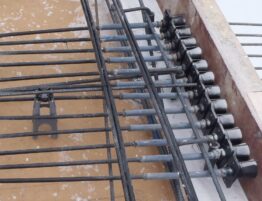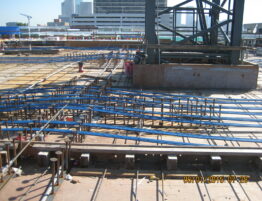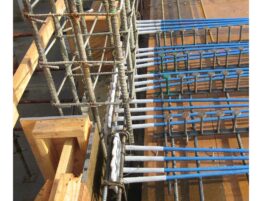
Reading Post-Tension Plans and Shop Drawings
In an earlier post, I discussed that post-tension slabs are generally thinner and have longer spans than similar conventionally-reinforced slabs. However, it stands to reason that getting that kind of performance requires careful design. Engineers spend a great deal of effort balancing concrete (which is very cheap) with more expensive rebar and post-tension tendons.
Once the engineer has finished sweating over the plans, post-tensioning is usually shown with a single line specifying a certain amount of force at a specific location. So a line of columns might be connected by a line that says “324 kips” – that’s a concentrated group of tendons following the column line. Orthogonal to that, the plans might have a plan extent or dimension and call for “40.5 k/ft”. Alternatively, the structural plans could show a line connecting the columns labeled “12T” and label the other direction as “2T @ 28”o.c.”
That’s admittedly a little arcane. Engineers love to use shorthand to keep the numbers small and generally round. A “kip” is 1000 pounds. 324 kips may not seem like a round number, but engineers generally start their design by assuming a certain number of kips per tendon. While it isn’t a law of nature, assuming 27 kips per tendon is an excellent place to start. This means that integer multiples of 27 are very common in structural post-tension layouts. When an engineer tunes her design, it’s important to understand that tendons can only be added in single-tendon increments. It does no good to specify 311 kips; the supplier will detail 12 tendons.
However the engineer designates tendons, there will also be a way to designate the control points that dictate how the tendons drape within the slab. Some engineers call out high and low points, while other engineers specify distance to the nearer side of the slab. Some engineers have a schedule with typical high and low points in each direction. However, in general, it’s important to realize that all of these will be measured to the center of the strand. Translating these high and low points into actual support profiles is the job of the detailer.





